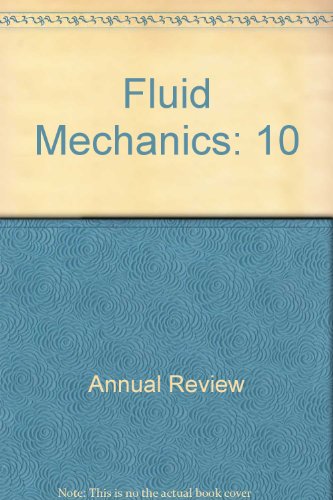旋转爆震发动机中的非理想性
IF 30.2
1区 工程技术
Q1 MECHANICS
引用次数: 18
摘要
旋转爆震发动机(RDE)是一种压力增益燃烧的实现,其中在燃烧室内的传播爆震波提供基于冲击的压缩以及化学热释放。由于波浪速度高,这种装置可以在小体积内处理高质量流量,从而实现紧凑和非常规的设计。RDEs涉及非定常和多尺度物理,其操作特性由大、小规模过程之间的平衡决定。虽然RDEs可以在理论上显著提高效率,但要实现这一改进,需要对多尺度耦合的理解。具体来说,不可避免的非理想情况,如非定常混合、二次燃烧和与实际设计相关的多重竞争波,需要理解和管理。二次燃烧过程产生于燃料/空气喷射和不稳定和不完全混合,并可能造成虚假损失。此外,多重爆轰波和二次波的组合竞争并定义了混合的动力学行为、热释放分布和装置的整体操作模式。这篇综述讨论了目前对这种非理想性的理解,并描述了用于深入了解这种燃烧器中极端不稳定环境的工具和技术。预计流体力学年度评论第55卷的最终在线出版日期为2023年1月。修订后的估计数请参阅http://www.annualreviews.org/page/journal/pubdates。本文章由计算机程序翻译,如有差异,请以英文原文为准。
Nonidealities in Rotating Detonation Engines
A rotating detonation engine (RDE) is a realization of pressure-gain combustion, wherein a traveling detonation wave confined in a chamber provides shock-based compression along with chemical heat release. Due to the high wave speeds, such devices can process high mass flow rates in small volumes, leading to compact and unconventional designs. RDEs involve unsteady and multiscale physics, and their operational characteristics are determined by an equilibrium between large- and small-scale processes. While RDEs can provide a significant theoretical gain in efficiency, achieving this improvement requires an understanding of the multiscale coupling. Specifically, unavoidable nonidealities, such as unsteady mixing, secondary combustion, and multiple competing waves associated with practical designs, need to be understood and managed. The secondary combustion processes arise from fuel/air injection and unsteady and incomplete mixing, and can create spurious losses. In addition, a combination of multiple detonation and secondary waves compete and define the dynamical behavior of mixing, heat release distribution, and the overall mode of operation of the device. This review discusses the current understanding of such nonidealities and describes the tools and techniques used to gain insight into the extreme unsteady environment in such combustors. Expected final online publication date for the Annual Review of Fluid Mechanics, Volume 55 is January 2023. Please see http://www.annualreviews.org/page/journal/pubdates for revised estimates.
求助全文
通过发布文献求助,成功后即可免费获取论文全文。
去求助
来源期刊
CiteScore
54.00
自引率
0.40%
发文量
43
期刊介绍:
The Annual Review of Fluid Mechanics is a longstanding publication dating back to 1969 that explores noteworthy advancements in the field of fluid mechanics. Its comprehensive coverage includes various topics such as the historical and foundational aspects of fluid mechanics, non-newtonian fluids and rheology, both incompressible and compressible fluids, plasma flow, flow stability, multi-phase flows, heat and species transport, fluid flow control, combustion, turbulence, shock waves, and explosions.
Recently, an important development has occurred for this journal. It has transitioned from a gated access model to an open access platform through Annual Reviews' innovative Subscribe to Open program. Consequently, all articles published in the current volume are now freely accessible to the public under a Creative Commons Attribution (CC BY) license.
This new approach not only ensures broader dissemination of research in fluid mechanics but also fosters a more inclusive and collaborative scientific community.

 求助内容:
求助内容: 应助结果提醒方式:
应助结果提醒方式:


